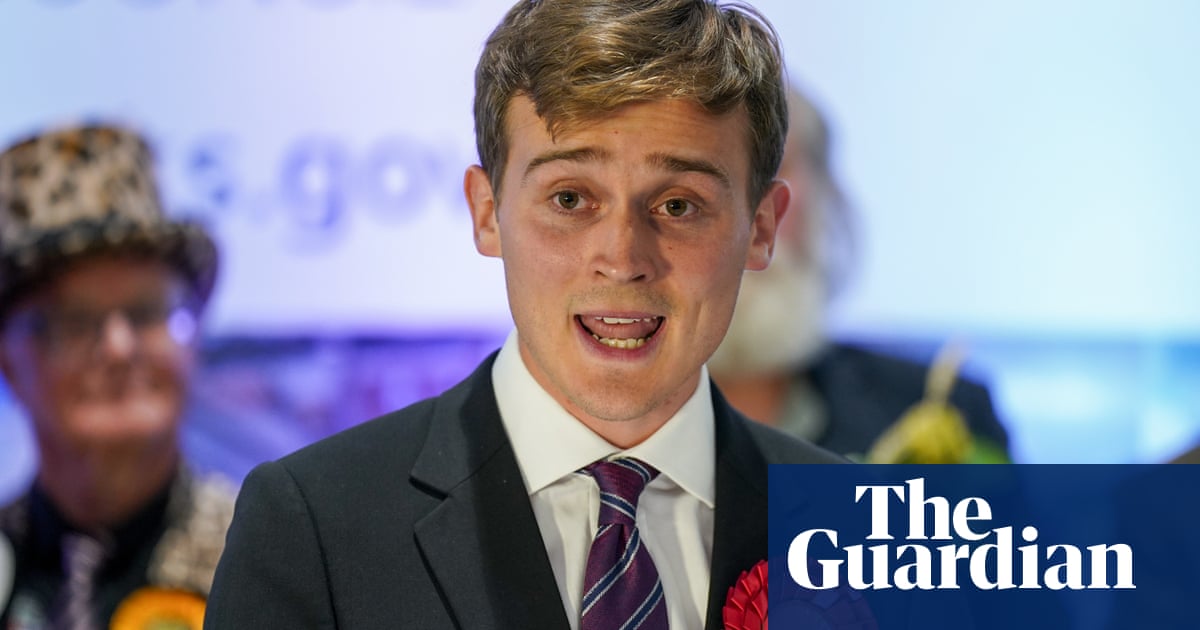
The first time I met John Prescott, we were in a helicopter flying over the Thames Gateway where he and Tony Blair, the then prime minister, also on board, were announcing a multimillion-pound regeneration plan.
It was August 2003 and I was a young pool reporter for the Press Association, there to ask the politicians about their plans on behalf of the rest of the media. The flight was noisy and we all wore ear protectors, so conversation was limited.
But as we flew over the Millennium Dome site, which lay empty as the government was struggling to sell it, “Prezza” tapped Blair on the arm and pointed out of the window at the huge structure below, a wide grin on his face.
Blair, perhaps unsurprisingly given the flak he’d received for the £1m-a-month cost of maintaining the site, arched an eyebrow and smiled wanly at his deputy’s effort to find humour in the situation.
It was a momentary glimpse into their dynamic, but an insightful one. “To say we were partners would never capture the nature of our relationship. There was nothing formal about it,” Blair said in his tribute to Prescott after the announcement of his death on Thursday.
“The truth is, for all the difficulties and the differences and the jokes about us both and our ‘odd couple relationship’, we had developed a genuine admiration, respect and affection for each other,” Blair remembered. “I relied on him many times: when in difficulty, under attack and, less well known, when I needed someone whose gut instinct I trusted better than my own.”
But Prescott, who was Britain’s longest-serving deputy prime minister, was more than just a friend and candid adviser to Blair. At the 1997 landslide election, and the subsequent two election victories, he was the bridge between the Labour party’s past and future.
Symbolically and in substance, Prescott represented much of the old Labour party that Blair knew he had to carry with him. He was from proud northern working-class stock and yet he instinctively understood aspiration.
A former merchant seaman, who as a waiter struck up a friendship with the recently resigned prime minister Anthony Eden on one cruise ship, he got involved with the union and in 1970 became the Labour MP for Hull East, a seat he held for 40 years.
He was the bridge between the past and future in other ways too, with a fierce intellect his sometimes garbled speaking style belied, a sharp political mind and a deep grasp of policy that transformed many of Britain’s inner cities through regeneration schemes.
He considered his greatest achievement to be his role as Britain’s lead negotiator for the Kyoto climate treaty, the first attempt to agree a global response to climate change, which provided the architecture for future agreements. Others agreed. Al Gore, the former US vice-president, said Prescott had “fought like hell” to deliver the deal.
That ferocity could be directed towards Labour colleagues and he did little to hide his disdain towards some. He was proud of his working-class roots but criticised for keeping his grace-and-favour residence Dorneywood. He was deeply loyal to Blair, but less so to his own wife, Pauline.
Yet as I saw high above the Millennium Dome that day, and as we walked through a new housing estate in the Thames Gateway afterwards, underneath Prescott’s gruff exterior there was a warmth and understanding that made him a great political communicator.
No other politician would have got away with some of his more outlandish remarks – or with punching a member of the public – and actually become more popular afterwards.
His charm no doubt came in handy during his regular interventions as peacemaker between Blair and Gordon Brown. He was also supportive of the next generation of Labour politicians, including his successor, Angela Rayner, whom he advised to always keep in mind the people she was there to represent.
“I’m going to be John Prescott in a skirt, I just say it how I see it,” Rayner said as she described in 2022 how she planned to do the deputy job. “Me and John are good mates. We see each other quite frequently, and I definitely look better in a skirt.”
Prescott played a crucial role in holding New Labour’s sometimes fragile electoral coalition together for 13 years, and many in the party will be looking at the role he played as inspiration for how the present Labour administration could do the same.












